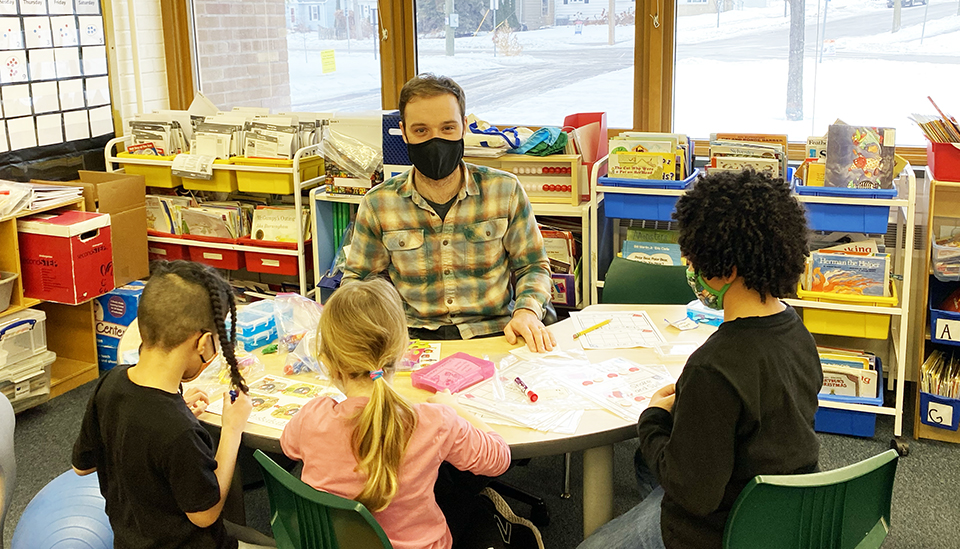
Chris Sanville is in his seventh year teaching English as a Second Language (ESL) at Waite Park elementary school in Minneapolis. He graduated from the Master’s of Education in Second Language Education licensure program in the Department of Curriculum and Instruction in 2015 and is now mentoring students from the program as a cooperating teacher. Though Sanville is now an experienced teacher, he says he learns just as much from the teaching candidates as they learn from him during their practicum experience.
Putting Research to Practice
“What’s cool about student teachers from the U is that they are really up on their research,” says Sanville. “The University is at the forefront of research and best practices in teacher education and the students come in with the latest strategies and methods. They have a lot to add to the classroom.”
For instance, one of the areas that has been changing in ESL research and instruction is a better understanding of how second languages are acquired with more of an emphasis on incorporating a student’s home culture. Sanville uses “translanguaging,” which is using a student’s full linguistic repertoire in the classroom instead of trying to keep narrowly focused on a single language. He is applying this trending second language acquisition theory to help newly arrived Afghan refugee students feel comfortable in their new school while they begin to learn English. So far, he’s deemed it a success.
Despite not speaking any Pashto, the native language of the Afghan students, he printed out numbers in Pashto script and put them on the board and gamely tried his best to read them for the class. That gave the students the confidence they needed to try English. Sanville emphasizes the importance of students seeing themselves represented and welcomed in the classroom with their language and their country’s flag. “If you feel more comfortable, you will be more open to learning,” he says “It’s backed by research.”
From Mentee to Mentor
While Sanville credits research as a major support in his teaching methods, he acknowledges that there’s no substitute for practice in the classroom. The student teaching experience is partially why he chose the University of Minnesota’s teacher licensure program. It offers all the required teaching hours in just one year with the support of a cooperating teacher, program coordinator, and site supervisor. “It was extremely economical and I could get a master’s degree, which is huge coming into the field in terms of pay,” he adds.
One of the happy surprises that Sanville didn’t expect was the strong bonds he formed with his program cohort. Some of his former peers he sees regularly, while others have become collaborators. “The cohort model brought me really important professional connections,” says Sanville, adding, “And I made lifetime friends.”
After seven years of teaching, Sanville has gained confidence in the classroom while amassing strategies for student success. His advice to the teaching candidates he mentors is to pick one thing to work on each year. “There are going to be lots of things coming at you that first year. Just think about the one skill you want to have at the end of the year and prioritize that. That way, after three years, you will be really good at three things; At the five-year mark, you will be really good at five things,“ Sanville advises. “With that level of skill, you can make a huge difference in a child’s life.”
Learn more about teacher licensure programs and the student teaching experience in the Department of Curriculum and Instruction, University of Minnesota.



